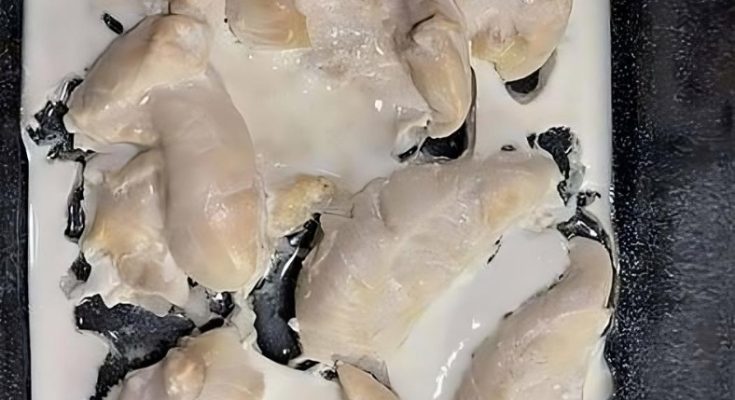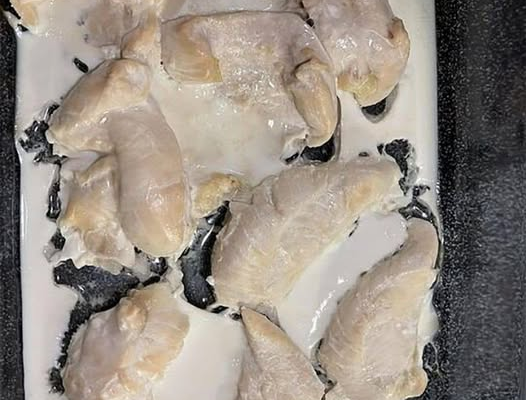What Is the White Goo?
First things first: the white goo on cooked chicken is completely safe to eat. That’s right—it’s not harmful, and it’s definitely not some strange chemical or additive. So, what is it exactly?
According to food scientists, the white goo is a combination of water and protein that’s naturally present in the chicken meat. When you cook chicken, the muscle fibers tighten under heat, squeezing out water and proteins from within the meat. As these proteins are exposed to heat, they coagulate, turning into the white, gel-like substance you see.
Think of it like egg whites when they’re cooked—they start as a clear liquid and solidify into a white, opaque form. The same basic process is at work here.
Why Does the White Goo Form?
To understand why the white goo appears, we need to look at how chicken meat behaves under heat. Chicken is made up of muscle, water, and protein. When it’s cooked, the following happens:
- Heat Causes Contraction: As the chicken heats up, the muscle fibers tighten, pushing out water and dissolved proteins.
- Protein Denaturation: The proteins in the liquid react to the heat, coagulating and solidifying. This is why the goo changes from liquid to a semi-solid, gel-like texture.
- Natural Juices: What you’re seeing is simply the meat’s natural juices being expelled and transforming under heat.
The process is completely normal, and the white substance is a harmless byproduct of cooking.
Does the Type of Chicken Matter?
You might have noticed that the white goo is more common with certain types of chicken. Frozen chicken, for example, seems to produce more of it. Why is that?
The key lies in how the chicken is processed and stored:
- Frozen Chicken: When chicken is frozen, ice crystals form within the muscle fibers. These crystals can damage the cell structure, causing the meat to release more liquid when cooked. As a result, you’re likely to see more white goo with frozen chicken than with fresh chicken.
- Trimmed Meat: Pre-trimmed or pre-packaged chicken often has a higher water content due to the processing methods. This can also increase the amount of liquid expelled during cooking.
The bottom line? The white goo isn’t a sign of poor quality—it’s just more noticeable in certain types of chicken



